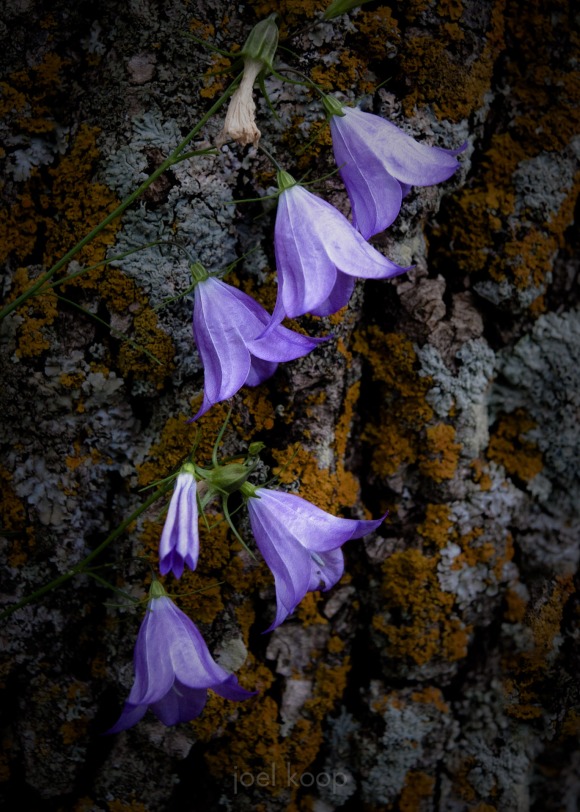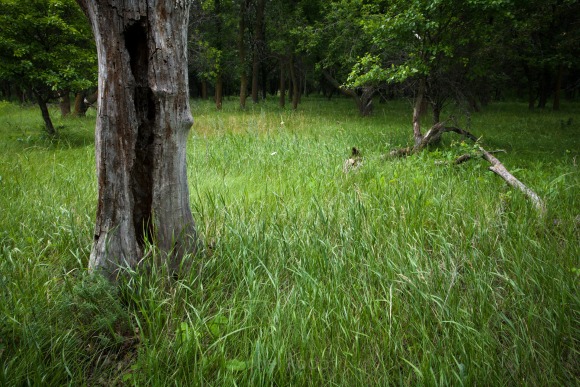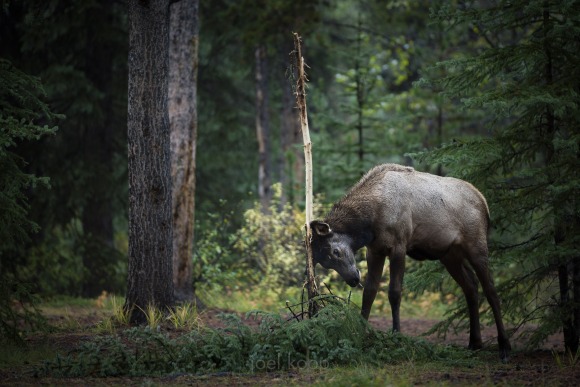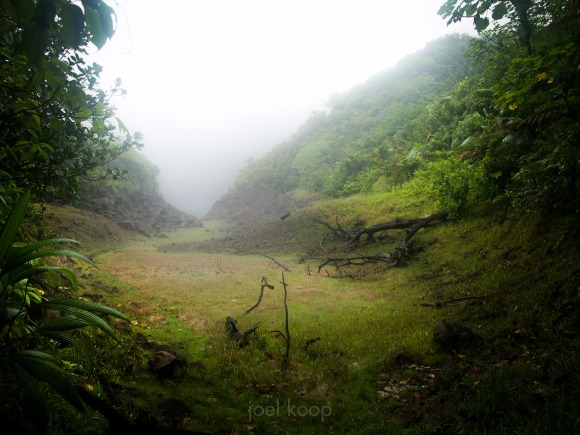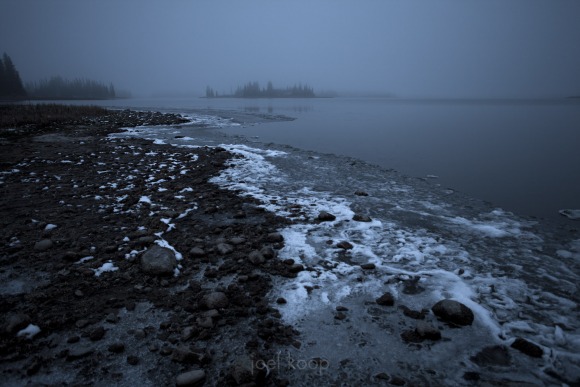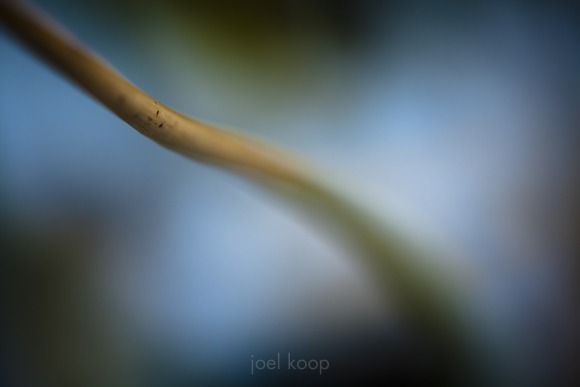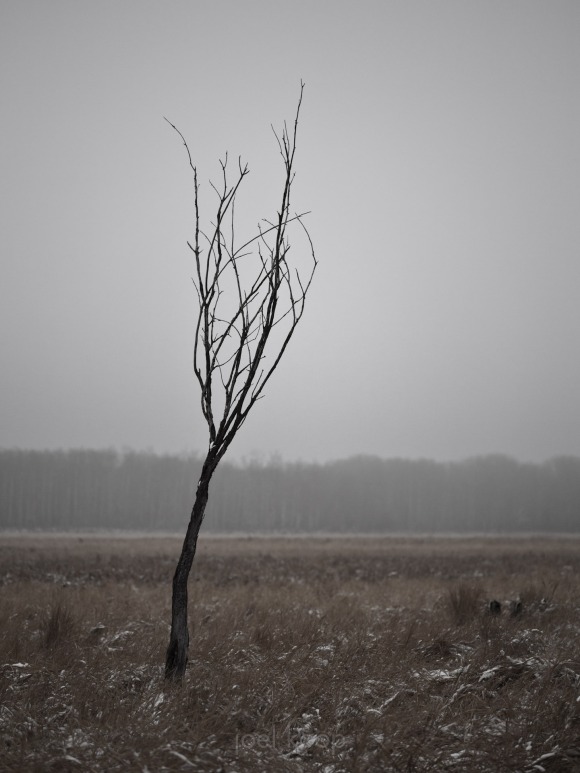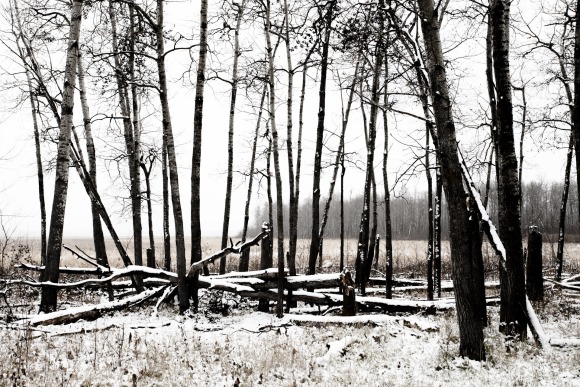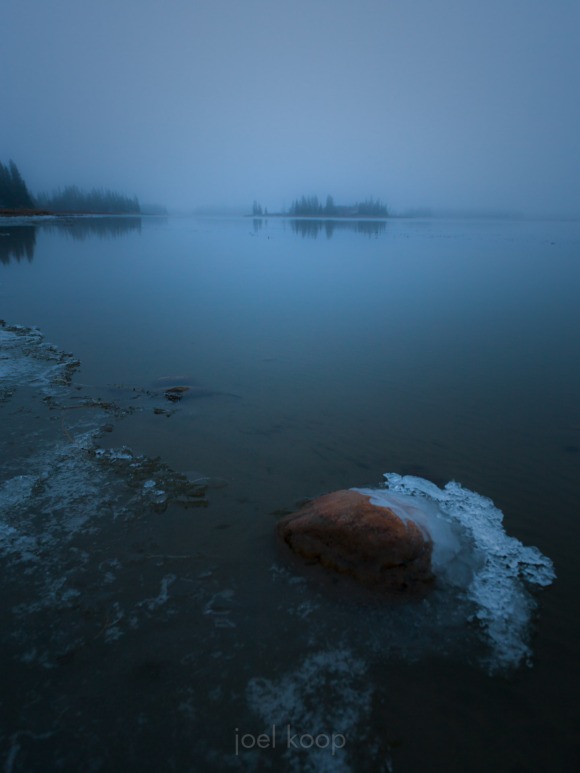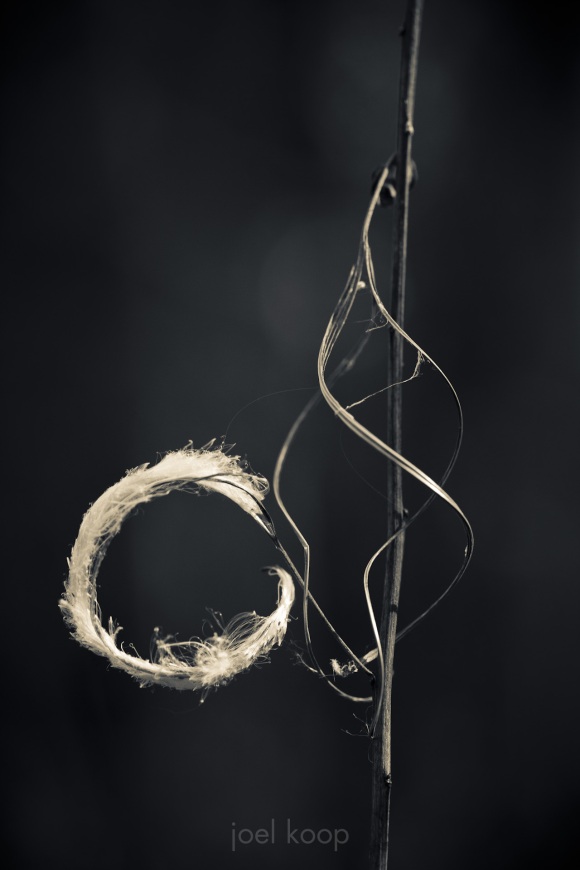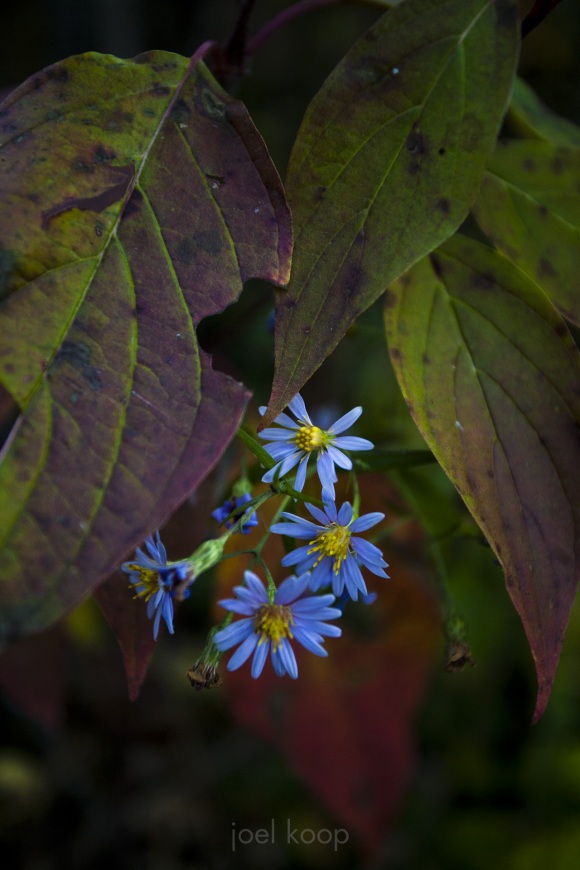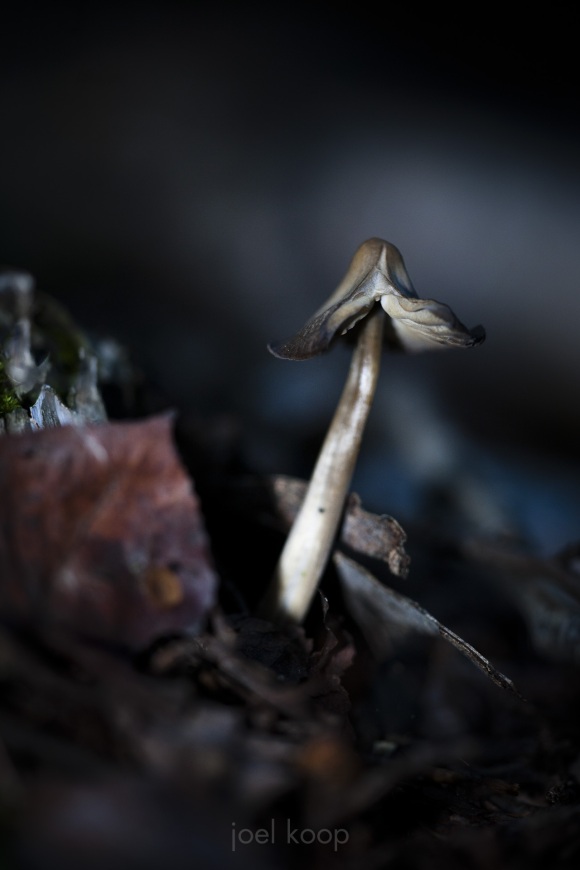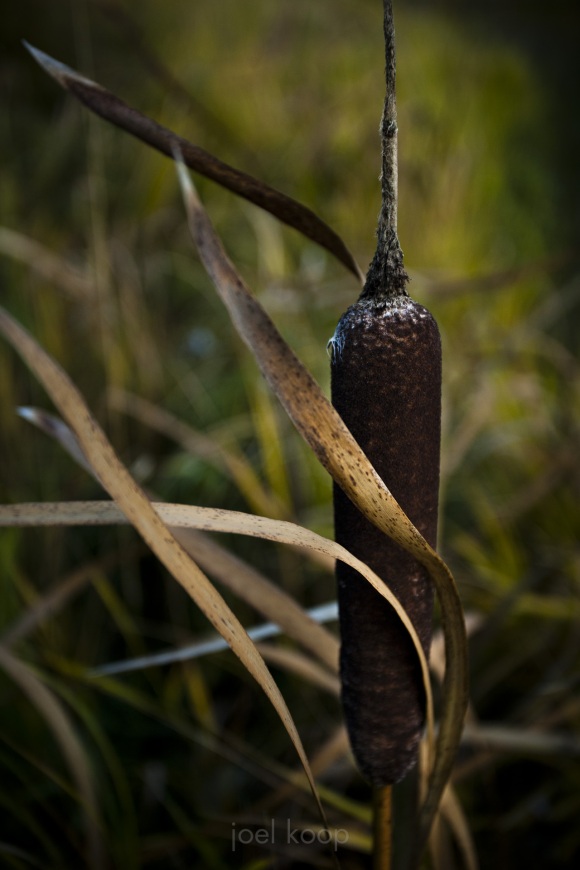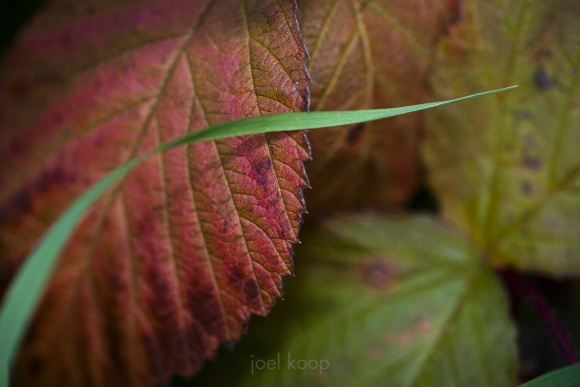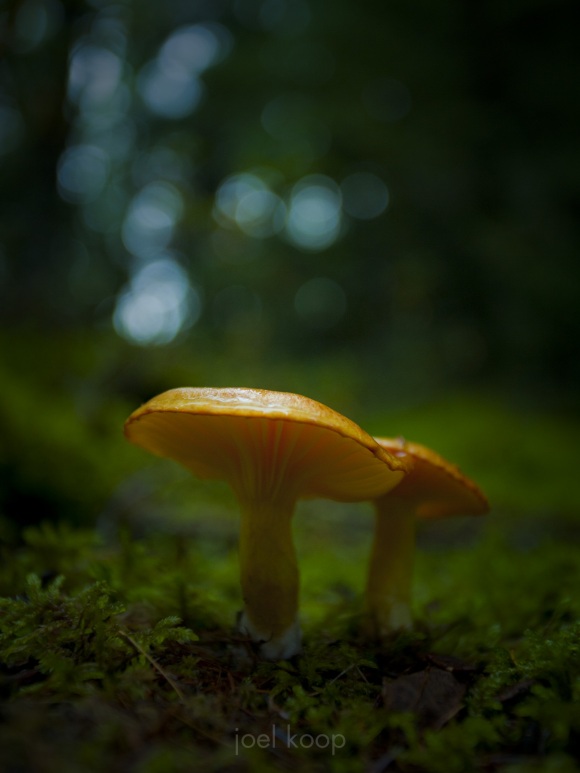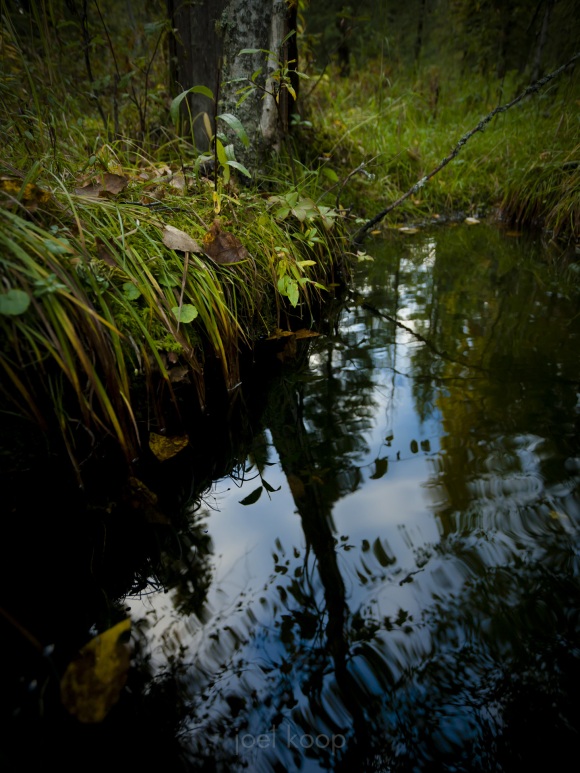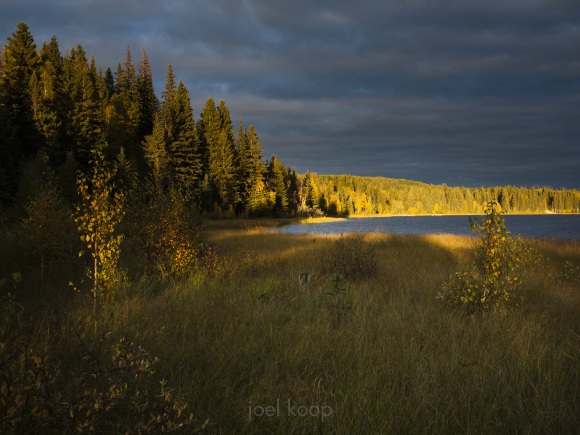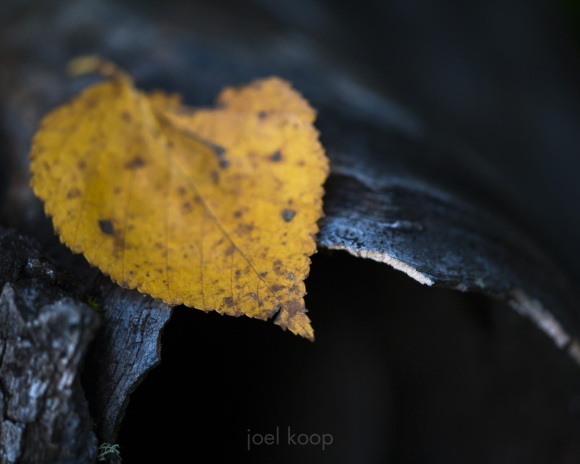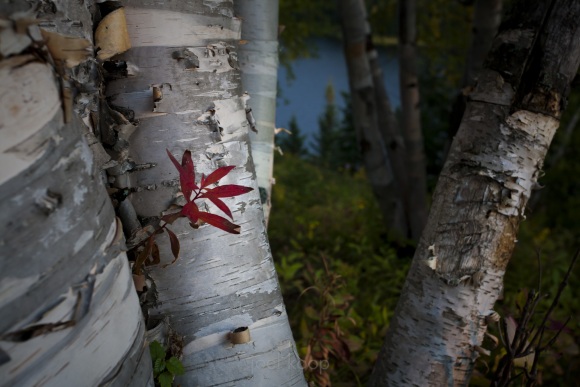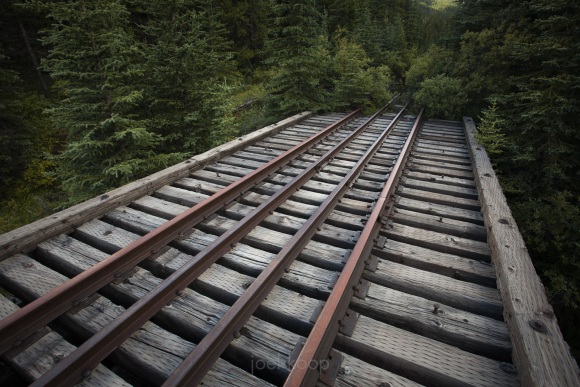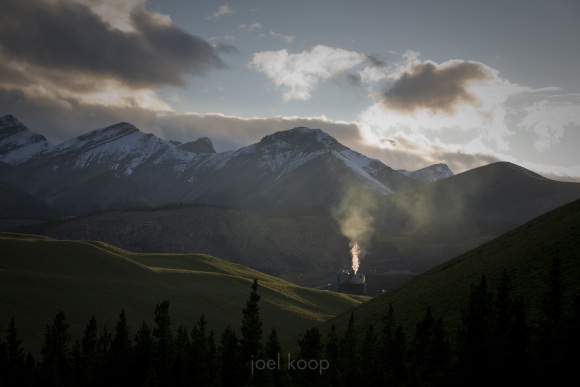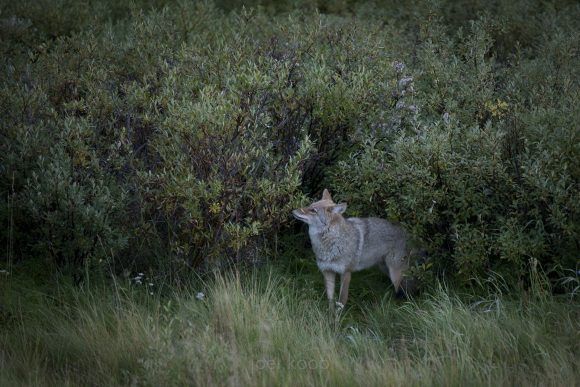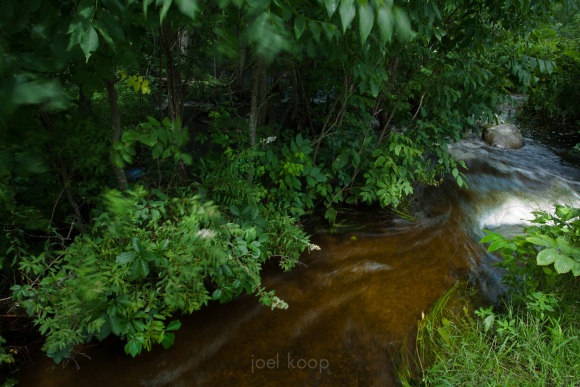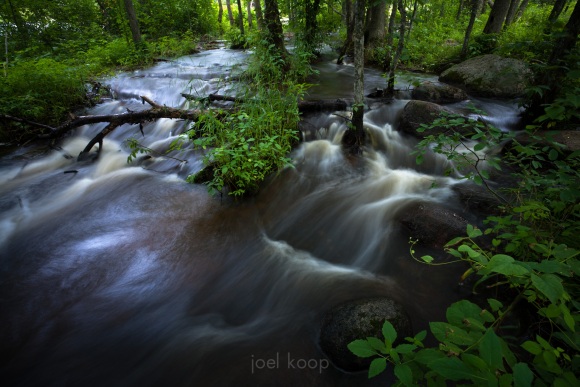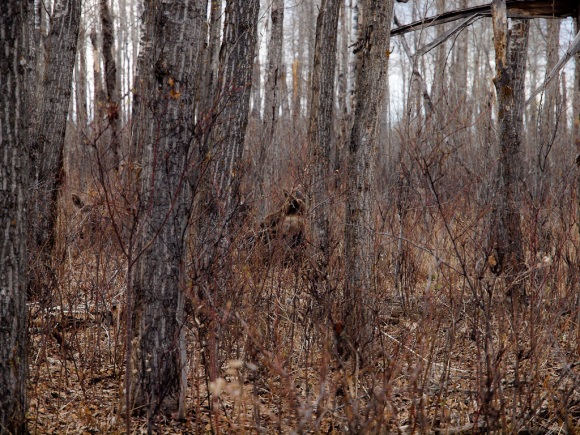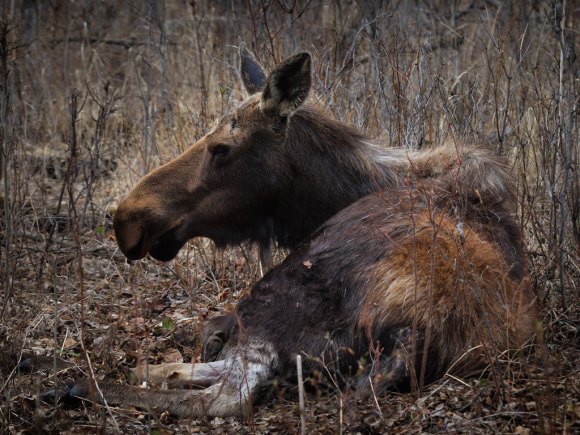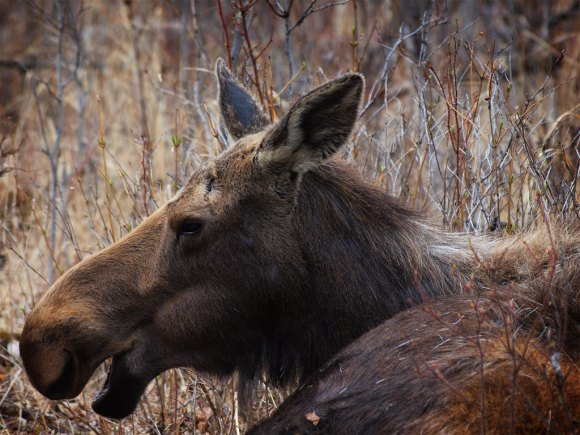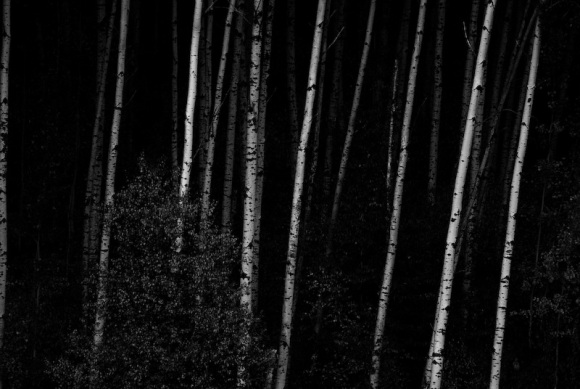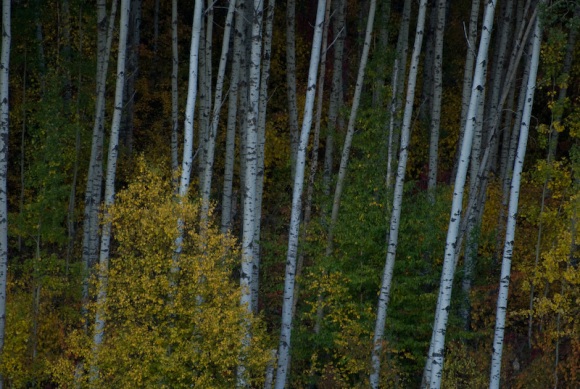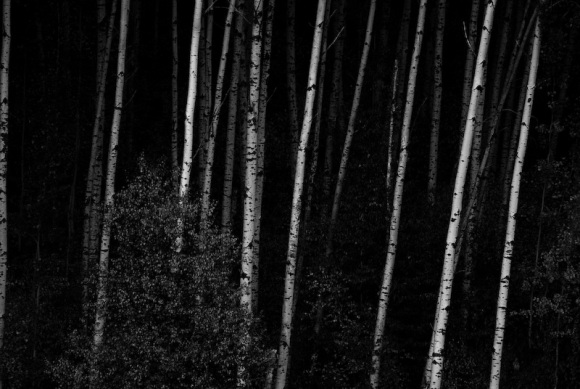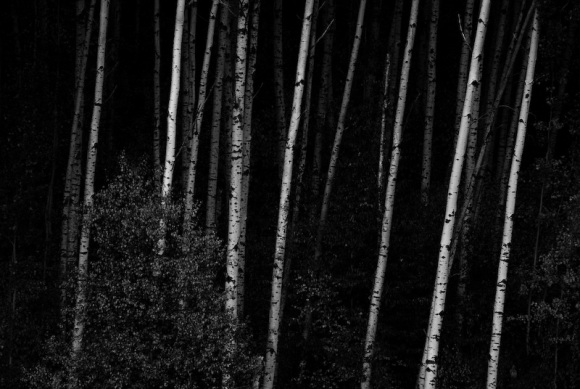This post is the first in a series of photo critiques I plan on doing with my own pictures. My goals for this are to improve my photography by conscious analysis and to give other photographers ideas for creating better images. I’m sure I’ve missed a lot in my analysis, and I welcome any questions, comments, corrections or additions.
Here is a recent picture of a poplar forest after sunset at Chickakoo Lake. It was taken at a focal length of 300mm at f5.6. The shutter speed was only 1/80 of a second, so I used a tripod and mirror lockup to get a sharp picture. This is the original with only some white balance corrections applied to the raw file:
What works:
My aim is for the photo to be simple and striking, evoking a sense of quiet unknown. The main, almost only, element in the photo is the repeating tree trunks disappearing into the forest. The narrow field of view from the 300mm lens helps crop out distracting elements: the sky, the treetops, the underbrush.
I kept the leafy tree in the bottom left. It does break up the repeating tree trunks, but works to stop some of the strongest lines in the image from dropping off the bottom edge. Instead the viewer’s eye gets briefly trapped in the subtle detail of the leaves before being snapped back to the high contrast tree trunks.
1. Compression – I used a 300mm telephoto lens. One of the effects of a telephoto lens is to compress the foreground and background into a single plane. There is no vanishing point: parallel lines do not converge. This makes the picture look flat – things that are actually separated by a lot of space appear to be right next to each other.
2. Depth – The evening light highlights the first few trunks of the poplar trees. These are very high contrast and grab the eye quickly, even if you just glance at the photo. Deeper into the forest, the trunks are darker, but still visible. This adds a subtlety and depth that can draw the eye in and hold it longer. There’s a sense of mystery as the forest is only partially revealed.
I find it interesting to play with depth through color and contrast in an image which has very little depth from foreshortening. Extreme wide angle is very popular for landscape photographers these days, and it often works very well, but good landscape photos are also possible at telephoto focal lengths and are a little more unusual.
What doesn’t:
I don’t particularly like the original colors in this image. The soft yellows, greens, and pinks take away from the high contrast, mysterious effect. They could be useful for a different goal, but I really like the dark brooding forest of the edited version. So I played with the curves a little bit to add contrast and converted to black and white. I can’t quite decide if the contrast is too strong now. Are there too few details left in the background?
On the left edge of the image is a dimly lit tree trunk beside a large dark area. I find that tree distracting. I may crop out the tree to give the image a little more balance, but it’s too bad because I really like that large dark void.
